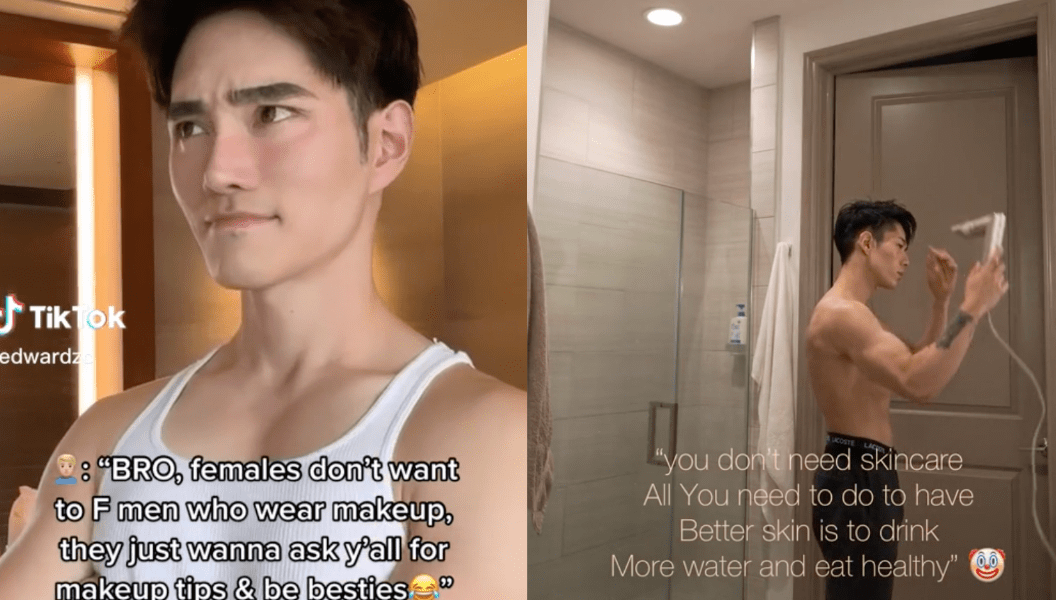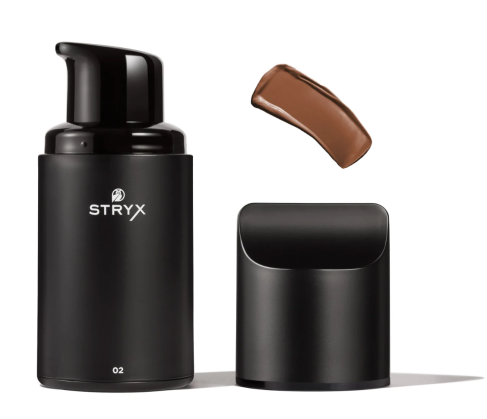Get the top trends, brands and industry news in fashion, beauty and wellness, straight to your inbox daily. Sign up for the Glossy Daily Newsletter here.
All products featured on Glossy Pop Shop are independently selected by our editorial team. However, when you buy something through our retail links, we may earn an affiliate commission.
In today’s retail landscape, especially among Gen-Z consumers, TikTok plays a strong role in which beauty products and brands become popular. One particular group that TikTok seems to hold increasing influence over is male shoppers.
According to a market research study published by Custom Market Insights [CMI], the global male grooming market was valued at approximately $55 billion in 2021. By 2030, that’s expected to reach $110 billion.
Men’s growing interest in skin care products was further affirmed by market research company NPD Group, which reported that 2022 men’s prestige skin-care sales reached $190.1 million, a 23% increase compared to 2021.
The Connecting the Dots 2022 report from insights firm GWI showed that, since 2018, beauty and cosmetic products have represented the “fastest-growing interest” among male consumers, increasing by 21% between 2018 and 2021. It peaked during Covid-19 lockdowns in early 2020. TikTok’s user base, meanwhile, doubled from 2019 to 2021.
So what does the boom of the men’s grooming market have to do with the video-forward, dance-crazed app?
According to Dr. Muneeb Shah, otherwise known on TikTok as the @dermdoctor (17.9 million followers), “TikTok has created a wealth of beauty content, including tips and tutorials on skin care, hair care and grooming. The ease of access to this information has made it available to men for the first time. Traditionally, this content would need to be sought out, but the ‘For You’ page (FYP) makes it so that individuals can discover new interests.”
He added, “TikTok has helped me personally break down gender stereotypes.”
TikTok has led the wave for a number of fashion and beauty trends, from “teenage dirtbag” looks to the rise of e-boy and e-girl culture. In doing so, it’s both reduced restrictions that the male consumer base has previously felt toward beauty products and opened up possibilities for self-expression.
While TikTok and Instagram have fairly similar membership numbers, TikTok has a larger audience for male-centered beauty content. According to market and consumer data platform Statista, as of January 2023, approximately 54% of TikTok global users were women and 46% were men.
For instance, the “#mensskincare” hashtag currently draws up approximately 350,000 results on Instagram; on TikTok, the same hashtag has over 295 million views.
A representative from TikTok pulled up the viewership count for several of the most popular male-centered beauty hashtags: #mensgrooming has 1.5 billion views, #mensmakeup has 326.8 million, #mensskincare has 292.7 million and #mensskincareproducts has 31.7 million, for example. There’s also #mensmanicure with 20.5 million views, #mensnails with 16.3 million and #mensmakeuptutorial with 8.1 million. To draw a point of comparison, on Instagram, the #mensgrooming hashtag has garnered 3.1 million posts.
In addition to skin-care products and cosmetic products providing a “natural” finish, male consumers are also becoming more interested in traditionally female-marketed beauty products. According to consumer behavior research firm Spate, there has also been a year-over-year increase in Google searches for “men” alongside products like eyeshadow (+9.5%) and nail polish (+13.7%).
The videos of SkinTok influencers Edward Zo (@edwardzo, 2 million TikTok followers) and David Kim (@dthekorean; 526,000 TikTok followers) regularly go viral. That’s especially true of videos that confront the concept of “toxic masculinity”. Many of Zo’s videos center on wig styling and colorful makeup looks. Kim’s videos primarily focus on how to build a proper skin-care routine and provide skin-care product and ingredient explanations.
Kim theorized that men of previous generations were not as self-aware of their appearance. With the rise of selfies and other aesthetically-focused social media content, however, younger generations of men have become more self-conscious and are now actively addressing insecurities.
In a discussion with Jon Shanahan, co-founder of male grooming and cosmetics brand Stryx, working from the comfort of home has allowed men to experiment with skin care and cosmetics in ways they haven’t before.
On the brand’s website, one of the company’s taglines goes, “Stryx was founded on a basic insight: Men seek to look handsome.” Versus the pink or more boldly-colored packaging of traditionally female-marketed products, Stryx’s units come in a more gender-neutral black-and-white color palette. The brand offers a mix of skin-care products, like a moisturizer and cleansers, and color cosmetics products, like the Tinted Moisturizer and the Concealer Tool, to help men achieve a “natural”, more polished version of their appearance.
With 328,000 followers, Stryx is one of the most followed men’s grooming brands on TikTok.
On the platform, the brand’s content centers around “get ready with me” (GRWM)-style videos that feature Stryx products like the Tinted Moisturizer and the Brow & Beard Gel Comb, in addition to product demonstrations and explanations from Shanahan.
Shanahan estimated that 70-75% of the brand’s 2022 sales were driven by its TikTok audience. In 2021, the brand generated approximately $1.5 million in sales, reflecting a 250% annual sales increase.
As for the Styx content that performs best on TikTok, Shanahan said it’s a mix of user-generated content (UGC) and GRWM videos, plus product tutorials featuring Shanahan himself.
“[Stryx] has a product that lends itself to [impactful] visuals. And the fact that I get on there regularly, and that I’m the target audience and can speak to [Stryx product] from all angles, has [worked to] build a relationship with our audience.”
Shanahan credited a large portion of the brand’s TikTok success to the subversive image of the brand. When asked to elaborate on the definition of subversive, the brand founder pointed out that it is currently uncommon and somewhat shocking to see a masculinely-presenting man take a concentrated effort in their facial appearance. The shock factor is a part of how the brand is able to stand out in the crowded beauty market.
“My GRWM videos perform twice as well when I have a mustache,” he said. “There’s the idea of a man with a mustache being masculine, but the idea of him using [makeup] captures people off guard a little bit.”
Over all else, consistency, a clear brand image and authenticity are keys to a brand’s success with a male audience on TikTok.
Executives from another male-marketed skin-care and grooming brand, Dr. Squatch, backed this up. Dr. Squatch currently has 410,000 TikTok followers, and it reached $100 million in sales in 2020. The company declined to report its 2022 sales numbers.
Visually speaking, the two brands couldn’t be any more different. Where Stryx has minimalistic, monochromatic branding, Dr. Squatch’s products, which range from bar soaps to colognes, have a somewhat rustic, boyish feel. Stryx’s TikTok videos primarily center on UGC of consumers using the products in their daily routines. The majority of Dr. Squatch’s content centers on trending sounds, cheeky memes, and comedic skits created by the brand and its consumers.
Authenticity is the common factor, said John Ludeke, head of marketing at Dr. Squatch.
“Even when we first went viral with our YouTube content, the goal has always been to be educational and entertaining,” he said. “Not taking ourselves too seriously has continued to work well on TikTok.”
He added, “TikTok allows for trends to proliferate better with a younger consumer than Instagram does. … It’s less polished and more impactful in driving customer behavior. The UGC is a more [successful] referral than some brand trying to aggressively sell you something.”







